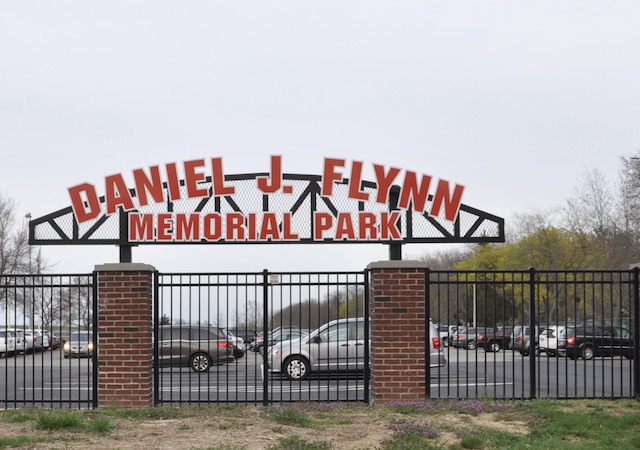Decline in smoking means decline in state revenue
 Monday, July 26, 2010 at 9:16PM
Monday, July 26, 2010 at 9:16PM By Ali Eaves,
Special to Stateline [Tuesday, July 20, 2010]
Americans are smoking less and less. That’s good news for public health, but it creates an ironically nasty side effect for many state budgets. They have grown dependent on an annual stream of money from tobacco companies, and that money is itself dependent on the number of people who consume cigarettes. 
The payments to states come each year as dictated by the Master Settlement Agreement, a 1998 settlement between 46 states and most of the big tobacco companies, in exchange for states’ promises not to sue the cigarette manufacturers over health claims. States have received $73 billion to date from participating tobacco companies. The payments are calculated each year by a formula that partly relies on the smoking rates in each state. Predicting the payments is never an exact science, but this year’s unwelcome 16 percent drop in funds is thought by many experts as the beginning of a long-term downward trend.
Smoking rates have been steadily declining since the 1980s, to the point where only 20.6 percent of adult Americans indulge, according to the most recent data. The average decline in federally-taxed sales during the past decade is around 3 percent per year, according to numbers from the federal Alcohol and Tobacco Tax and Trade Bureau — but a string of tax increases in 2009 was enough of a disincentive to move that number to more than 8 percent.
Raising taxes on tobacco products has long been a favorite revenue strategy for cash-strapped states, and last year nine states increased their cigarette taxes. The federal tax increase of 62 cents, however, probably had the most to do with the big drop in nationwide smoking rates. Standard & Poor’s predicts that the decline in consumption over the next few years will be around 4 or 5 percent per year, and if that’s correct, the settlement payments will continue to fall.
Money withheld
A second factor that has been driving payments downward is the claim of the major tobacco companies that they have unfairly lost business to other companies — smaller tobacco producers that did not take part in the settlement — as a result of the deal. If this is the case, under the settlement, participating tobacco companies are allowed to scale back their payments. But states can still claim full payments if they can prove that they have enforced laws to make non-participating companies pay their share to the states, too.
According to Eric Lindblom of the Campaign for Tobacco-Free Kids, each state has gone beyond what is required by the settlement to enforce and strengthen those laws. Regardless, most of the participating companies have been withholding a portion of their payments — as much as 18 percent — since 2006, banking on a ruling that at least some states haven’t properly enforced these laws dealing with non-participants in the deal.
Since 2006, this disagreement has put payments worth a total of $6.3 billion into question. Binding arbitration has begun just this month among 45 states and two dozen participating cigarette companies to determine whether the 2006 payment should be subject to the $1.1 billion reduction that tobacco companies say they have a right to. The following years' payments will be settled separately, but the decision in the current case will set an important precedent for those adjustments because it will finally define adequate enforcement. The timeline is uncertain, but the dispute is not expected to be resolved before next year’s payment on April 15, 2011.
If the states win, the tobacco companies will have to pay back the withheld amount with interest. The flip side is quite severe. Any states that lose will have to reimburse the tobacco companies for the entire national adjustment for that year. According to the National Association of Attorneys General, in the worst-case scenario, a losing state could end up paying back its entire settlement payment for one year — in many cases, that means hundreds of millions of dollars. Instead of paying the tobacco companies directly, the payback would most likely come in the form of deductions from future settlement payments.
Potential impact on programs
States can use their settlement payments for a variety of purposes, but many earmark it for special programs that depend entirely on the tobacco payments for funding. This is the case for the Kentucky Agricultural Development Fund, which provides grants for farm diversification and helps shift the state’s economy away from a dependence on tobacco. Recently, Governor Steve Beshear promised that the fund would be protected if the tobacco payments fell below the state’s projections, but that may not help much. This year, the state forecasted a reduction in tobacco payments of 11 percent. The actual payment was down 17 percent, so Beshear’s promise helped save some of the funding, but the program still had to suffer the 11 percent cut. The numbers are even grimmer in the future: If predictions are correct, between now and 2012, the fund’s budget will go from $6 million to $1.5 million.
“Moving forward is the question,” says Joel Neaville, of the Kentucky Agriculture Development Board. “Are we going to be able to do what the program is supposed to do with reduced revenue and uncertainty in the future?”
North Carolina’s Health and Wellness Trust Fund, which funds smoking cessation, obesity prevention and other health programs, also receives all its funding from the tobacco settlement payments. It’s supposed to receive one quarter of the payment each year, but the General Assembly often diverts money for other projects and to close budget gaps. On top of that, after a 16.5 percent reduction in the tobacco payment this year, the fund is expecting some cuts and will probably scale back on some benefits and freeze new programs in the works.
—Contact Ali Eaves at aeaves-temp@pewtrusts.org
The above article written by Ali Eaves is a reprint of Tuesday, July 20, 2010 Stateline.org






